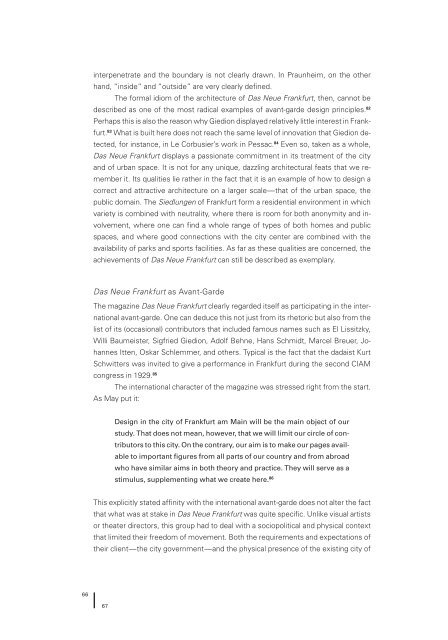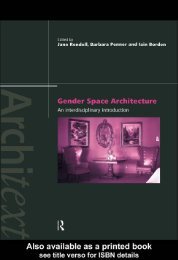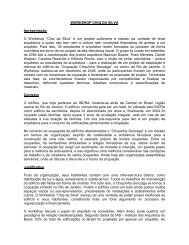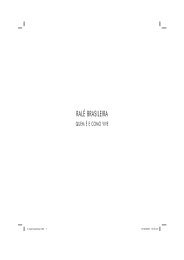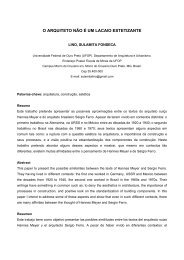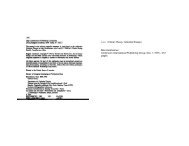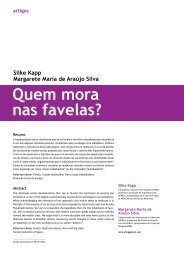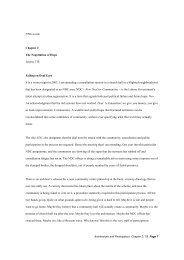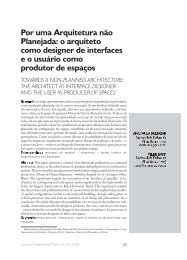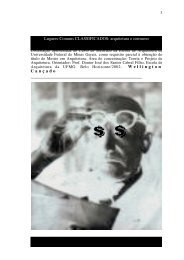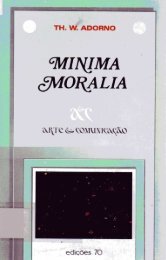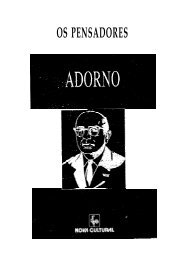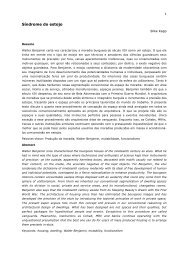Architecture and Modernity : A Critique
Architecture and Modernity : A Critique
Architecture and Modernity : A Critique
You also want an ePaper? Increase the reach of your titles
YUMPU automatically turns print PDFs into web optimized ePapers that Google loves.
66<br />
interpenetrate <strong>and</strong> the boundary is not clearly drawn. In Praunheim, on the other<br />
h<strong>and</strong>, “inside” <strong>and</strong> “outside” are very clearly defined.<br />
The formal idiom of the architecture of Das Neue Frankfurt, then, cannot be<br />
described as one of the most radical examples of avant-garde design principles. 82<br />
Perhaps this is also the reason why Giedion displayed relatively little interest in Frankfurt.<br />
83 What is built here does not reach the same level of innovation that Giedion detected,<br />
for instance, in Le Corbusier’s work in Pessac. 84 Even so, taken as a whole,<br />
Das Neue Frankfurt displays a passionate commitment in its treatment of the city<br />
<strong>and</strong> of urban space. It is not for any unique, dazzling architectural feats that we remember<br />
it. Its qualities lie rather in the fact that it is an example of how to design a<br />
correct <strong>and</strong> attractive architecture on a larger scale—that of the urban space, the<br />
public domain. The Siedlungen of Frankfurt form a residential environment in which<br />
variety is combined with neutrality, where there is room for both anonymity <strong>and</strong> involvement,<br />
where one can find a whole range of types of both homes <strong>and</strong> public<br />
spaces, <strong>and</strong> where good connections with the city center are combined with the<br />
availability of parks <strong>and</strong> sports facilities. As far as these qualities are concerned, the<br />
achievements of Das Neue Frankfurt can still be described as exemplary.<br />
Das Neue Frankfurt as Avant-Garde<br />
The magazine Das Neue Frankfurt clearly regarded itself as participating in the international<br />
avant-garde. One can deduce this not just from its rhetoric but also from the<br />
list of its (occasional) contributors that included famous names such as El Lissitzky,<br />
Willi Baumeister, Sigfried Giedion, Adolf Behne, Hans Schmidt, Marcel Breuer, Johannes<br />
Itten, Oskar Schlemmer, <strong>and</strong> others. Typical is the fact that the dadaist Kurt<br />
Schwitters was invited to give a performance in Frankfurt during the second CIAM<br />
congress in 1929. 85<br />
The international character of the magazine was stressed right from the start.<br />
As May put it:<br />
67<br />
Design in the city of Frankfurt am Main will be the main object of our<br />
study. That does not mean, however, that we will limit our circle of contributors<br />
to this city. On the contrary, our aim is to make our pages available<br />
to important figures from all parts of our country <strong>and</strong> from abroad<br />
who have similar aims in both theory <strong>and</strong> practice. They will serve as a<br />
stimulus, supplementing what we create here. 86<br />
This explicitly stated affinity with the international avant-garde does not alter the fact<br />
that what was at stake in Das Neue Frankfurt was quite specific. Unlike visual artists<br />
or theater directors, this group had to deal with a sociopolitical <strong>and</strong> physical context<br />
that limited their freedom of movement. Both the requirements <strong>and</strong> expectations of<br />
their client—the city government—<strong>and</strong> the physical presence of the existing city of


